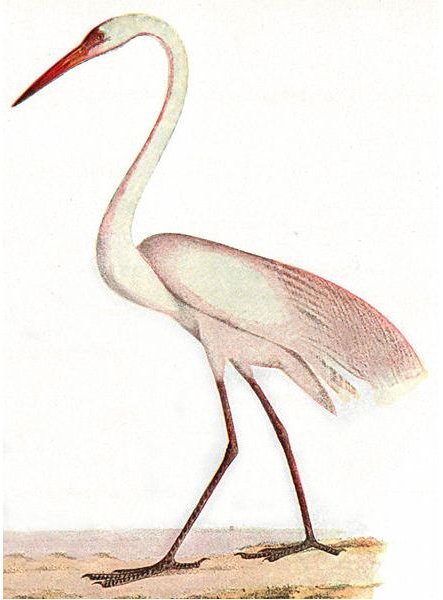A White Heron
The short story A White Heron (English: The white heron) was published in 1886 by Sarah Orne Jewett and is considered along with the book " The Country of the Pointed Firs " (1896 ) as their main work. The story is part of a collection of short stories (A White Heron, The Gray Man, Farmer Finch, Marsh Rosemary, The Dulham Ladies, A Business Man, Mary and Martha, The News from Petersham, The Two Browns ), which under the name of " A White Heron and other Stories " has been released. The short story revolves around nature experiences and the adolescence of the main character Sylvia. Shown is the metaphorical journey of the main character and their consciousness developments on the way to adulthood, and the decision for a nature-loving life. This decision contains implicitly rejecting the progressive industrialization. It thus is a prime example of an initiation story. Like few other stories Sarah Orne Jewett 's Shines " A White Heron" by detailed and plastic descriptions of the nature of New England and its inhabitants, and does not apply least because along with Nathaniel Hawthorne's Young Goodman Brown as a significant example of emancipatory literature New England ( see Related links on this page ).
Literary significance and reception
Critics, including the well-known American author and critic William Dean Howells see the short story " A White Heron" under the following aspects as particularly valuable:
- " Creation " of an draft for progressive industrialization ( utopia )
- An outstanding example of the "New England Realism" (see: William Dean Howells )
- Emancipation from materialism and industrialism
- Return to the individual as socially significant player
- Return to nature (start nature of ethical literature in North America)
- Beginning of doubt about unqualified development of the USA ( paradise lost )
- Important example of the feminist literature of New England.
Abstract
Sylvia, who spent in the city the previous eight years of her life, now lives with her grandmother in rural New England. She plays with the cows, delights in wild animals and roaming the forests in the area. She is perfect in nature (see Transcendentalism ). One day she meets a hunter from the modern city, which is on the search for the rare white heron. Sylvia, who thinks this bird to have ever seen, goes after a slight hesitation on the search, on the one hand to please the young hunter and the other to win a cash prize ($ 10 ), which has offered the hunter man for himself. When Sylvia finally discovered after a long search and experience- rich way through the forests of New England the heron, she tries to get to the nest of the beast that is on a tall pine. On the way to top it says, the tree talk to her and deny her the promotion. In a return to the beauty and tranquility of its surroundings she finds the rise finally much easier. Once at the top of the jaw, she discovers the one hand, the nest, the other hand also the distant Atlantic Ocean with numerous incoming ships. Faszniniert by the beauty of nature, the rare animals in their immediate vicinity and the contrast to " much populated " Ocean Sylvia comes to the decision to keep their discovery to themselves and the white heron (and thus the natural products) from danger and changes to. protecting So she opts against modernization and materialism ($ 10) and for a nature-loving, idyllic life.










